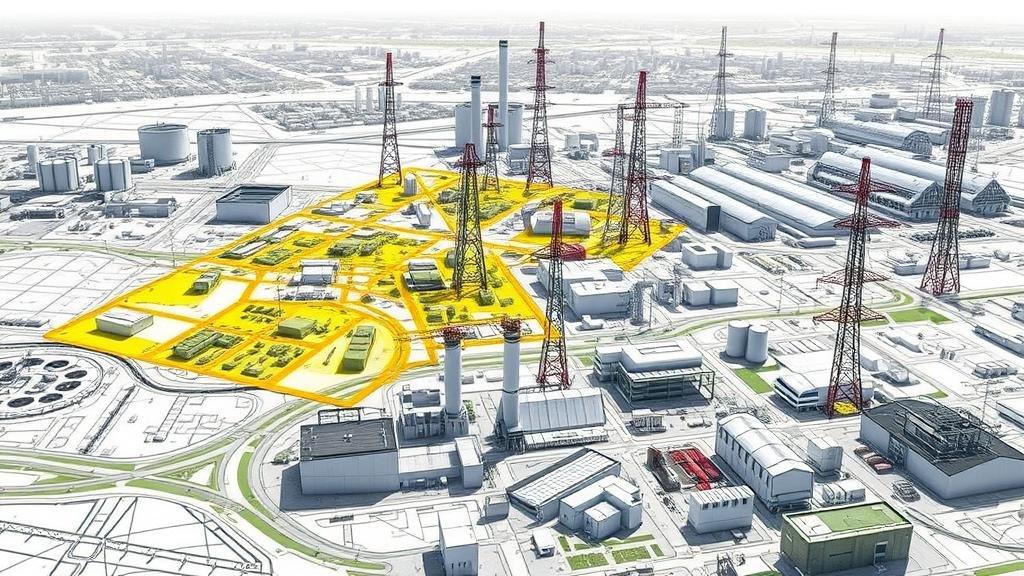How AI Can Detect Unusual Site Patterns in Historical Industrial Records
How AI Can Detect Unusual Site Patterns in Historical Industrial Records
The advent of artificial intelligence (AI) has revolutionized numerous domains, and its application in analyzing historical industrial records presents profound implications. The capacity of AI to scrutinize large datasets, identify unusual patterns, and extract meaningful insights can enhance our understanding of historical industrial activities, contributing to fields such as archaeology, history, and urban studies. This article will explore the methodologies employed by AI to detect unusual site patterns, illustrate real-world applications, and discuss the implications of these findings.
Introduction to AI in Historical Analysis
AI encompasses a range of technologies, including machine learning (ML) and natural language processing (NLP), that enable systems to perform tasks typically requiring human intelligence. In historical analysis, AI can process extensive historical datasets, revealing patterns that are often imperceptible to human experts. For example, the analysis of historical industrial records–such as census archives, factory logs, and regulatory documents–can reveal trends in workforce demographics, production outputs, and economic shifts.
Methodologies for Pattern Detection
The detection of unusual patterns in historical industrial records employs several methodologies:
- Data Preprocessing: The initial step involves cleaning and normalizing data gathered from various sources to ensure consistency. This is crucial as different records may have varying formats and terminologies.
- Machine Learning Algorithms: Supervised and unsupervised learning algorithms are utilized to identify patterns in the data. Algorithms such as decision trees, k-means clustering, and neural networks can be employed depending on the nature of the dataset.
- Anomaly Detection Techniques: Specific techniques such as Isolation Forest, One-Class SVM, and Autoencoders can effectively identify outliers or unusual observations within the dataset that deviate significantly from established patterns.
Historical Context and Data Sources
Understanding historical industrial trends necessitates access to diverse datasets. Significant records can include:
- Factory Production Records: These documents detail production rates, materials used, and workforce statistics across specific timeframes.
- Census Data: Demographic data provides context regarding the labor force available for industrial work, influencing production capabilities.
- Trade and Regulation Archives: Government regulations and trade agreements can affect industrial growth, offering insights into economic shifts.
For example, the analysis of the U.S. manufacturing sector from the late 19th to early 20th century demonstrates how emerging industries affected workforce distribution and urbanization processes. Utilizing data from the U.S. Census Bureau and industrial surveys, AI can reveal patterns illustrating rapid changes in production methods and locations, notably during the Industrial Revolution.
Case Study: Analyzing Production Data from Great Britain (1780-1850)
In a study focusing on Great Britain during the Industrial Revolution, AI techniques were employed to analyze data from textile production records. By applying machine learning algorithms to a dataset comprising over 200,000 entries from factory logs, researchers successfully identified unusual spikes in production that correlated with significant socio-economic events, such as the introduction of mechanized looms and labor strikes.
Plus, the study highlighted the emergence of particular geographic clusters in textile manufacturing, showcasing how certain regions became industrial hubs. Such insights could not only inform historical narratives but also assist modern policymakers in understanding industrializations long-term impacts.
Challenges and Limitations
While AI offers promising capabilities for detecting unusual site patterns, several challenges must be acknowledged:
- Data Quality: Historical datasets often suffer from incomplete or inaccurate records, which may lead to biased analyses.
- Interpretation: The context of detected patterns requires careful interpretation to avoid misrepresenting historical events.
- Ethical Considerations: The potential to misapply findings could raise ethical questions regarding the interpretation of historical data, necessitating responsible use of AI in historical research.
Implications for Future Research
The ability of AI to analyze and interpret historical industrial records holds significant implications for future research:
- Enhanced Understanding of Industrialization: AI can uncover buried data patterns, contributing to a more nuanced understanding of industrializations impacts globally.
- Interdisciplinary Collaborations: Collaborative efforts between historians, data scientists, and sociologists can foster innovative research methodologies.
- Preservation of Historical Records: AI can aid in digitalizing and preserving historical data, enabling further academic inquiry and public access.
Conclusion
AIs application in detecting unusual patterns in historical industrial records marks a significant advancement in historical research methodologies. By leveraging sophisticated data analysis techniques, researchers can unearth insights that not only enhance our understanding of industrial trends but also contribute to broader discussions regarding socio-economic development and urban transformations. Moving forward, it is imperative to address the challenges and ethical considerations associated with AI to ensure responsible use in the exploration of our industrial past.
The intersection of AI and historical analysis opens new avenues for academic inquiry and offers the potential for re-evaluating well-established historical narratives through the lens of data-driven insights.



